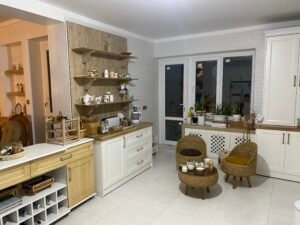Scandinavian design has taken the world by storm with its captivating simplicity and timeless elegance. Originating from the Nordic countries, this design style has become synonymous with minimalism, functionality, and clean lines. The essence of Scandinavian design lies in its ability to create harmonious and inviting spaces that are both aesthetically pleasing and highly functional. In this article, we will explore the key elements that make Scandinavian designs so captivating.

The Essence of Scandinavian Design
Scandinavian design is characterized by its simplicity, functionality, and emphasis on natural light. This design style emerged in the early 20th century as a response to the industrial revolution. The Scandinavian designers aimed to create accessible and affordable designs that could enhance the quality of everyday life. They believed that good design should be available to everyone, not just the elite.
Minimalism and Functionality Combined
One of the defining features of Scandinavian design is its minimalist approach. This style embraces the concept of “less is more” and focuses on removing unnecessary clutter. By keeping only the essential elements, Scandinavian designers create spaces that feel open, airy, and uncluttered. Functionality is also a key aspect of this design style, with an emphasis on practicality and usability.
Clean Lines and Natural Materials
Clean lines are another hallmark of Scandinavian design. Furniture and decor pieces are often characterized by simple and geometric shapes, creating a sense of calm and order. Natural materials such as wood, leather, and stone are commonly used in Scandinavian designs to bring warmth and texture to the space. These materials not only add visual interest but also create a connection to nature, which is an important aspect of Scandinavian culture.

Light and Airy Spaces
Scandinavian countries experience long, dark winters, which has influenced the design philosophy of maximizing natural light. Scandinavian designs often feature large windows, allowing ample sunlight to flood the space. Light-colored walls and furniture further enhance the feeling of brightness, making the rooms appear larger and more inviting. The use of mirrors is also prevalent in Scandinavian design as they reflect light and create an illusion of a bigger space.
Harmonious Color Palettes
Scandinavian design is known for its calming and harmonious color palettes. The color scheme typically consists of neutral shades such as white, gray, and beige, which help create a sense of serenity. Accents of muted pastels or bold pops of color are occasionally used to add visual interest and personality to the space. The goal is to create a balanced and tranquil environment that promotes relaxation and well-being.

Timeless Elegance in Every Detail
In Scandinavian design, every detail matters. From furniture to lighting fixtures, every piece is carefully chosen for its quality and craftsmanship. The emphasis on simplicity and functionality is carried through to the smallest details, resulting in a cohesive and harmonious overall design. Scandinavian designs have a timeless elegance that transcends trends, making them a popular choice for those seeking a long-lasting and sophisticated aesthetic.
Scandinavian design has become a global sensation due to its captivating simplicity and emphasis on functionality. Through minimalism, clean lines, natural materials, light-filled spaces, harmonious color palettes, and timeless elegance, Scandinavian designs create inviting and serene environments. This design style continues to inspire and influence designers worldwide, proving that sometimes it’s the simplest things that leave the most lasting impressions. Whether you are looking to transform your living space or simply seeking inspiration, exploring Scandinavian designs is sure to leave you captivated.
